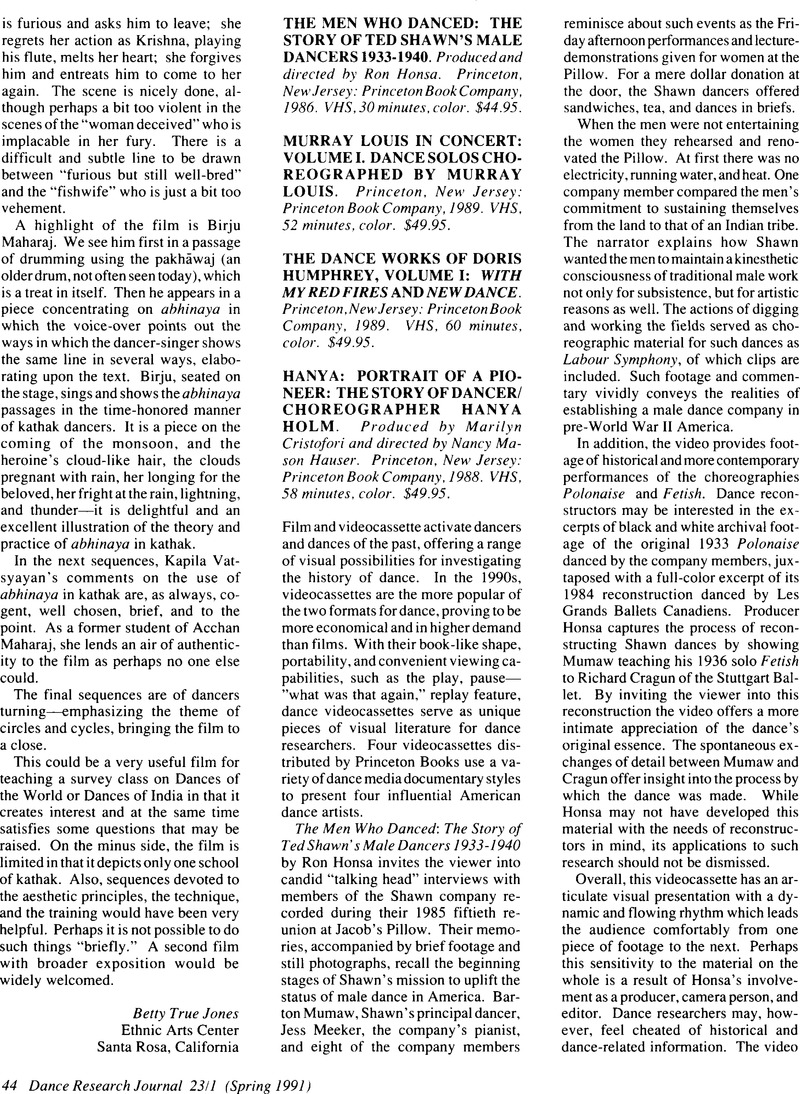No CrossRef data available.
Article contents
The Men who Danced: The Story of Ted Shawn's Male Dancers 1933–1940. Produced and directed by Ron Honsa. Princeton, New Jersey: Princeton Book Company, 1986. VHS, 30 minutes, color. $44.95. - Murray Louis in Concert: Volume I. Dance Solos Choreographed by Murray Louis. Princeton, New Jersey: Princeton Book Company, 1989. VHS, 52 minutes, color. $49.95. - The Dance Works of Doris Humphrey, Volume I: With My Red Fires and New Dance. Princeton, New Jersey: Princeton Book Company, 1989. VHS, 60 minutes, color. $49.95. - Hanya: Portrait of a Pioneer: The Story of Dancer/Choreographer Hanya Holm. Produced by Marilyn Cristofori and directed by Nancy Mason Hauser. Princeton, New Jersey: Princeton Book Company, 1988. VHS, 58 minutes, color. $49.95.
Published online by Cambridge University Press: 22 July 2014
Abstract

- Type
- Reviews
- Information
- Copyright
- Copyright © Congress on Research in Dance 1991
References
Notes
1. Researchers interested in Shawn as an individual artist or as a co-artist with Ruth St. Denis may find Denishawn, A Day at Jacobs Pillow and Dance of the Ages/On the Shore to be helpful resources. These films range from six to ten minutes in length; A Visit with Ted Shawn and Ruth St. Denis (also known as Ted Shawn and Ruth St. Denis) is thirty minutes in length.Google Scholar
2. Sales data supplied by Charles Woodford, Princeton Book Company, September 1990.Google Scholar
3. There is a discrepancy between dates and names given on the videocassette and those given on the videocassette cover. For example, “Haikus” appears on the videocassette and “Haiku” on the back of the cover, and the recording of Journal (Opening Dance) is given as 1971 on the videocassette and as 1972 on the back of the videocassette cover.
4. Dance researchers and dance media producers may find further information about the lighting, camera positioning, and editing choices in Virginia Loring Brooks's very sound articles, “Conventions in the Documentary Recording of Dance Research Needs”, published in Dance Research Journal 19/2 (Winter 1987–1988): 15–26, and “Why Dance Films Do Not Look Right: A Study in the Nature of Documentary Movement as Visual Communication,” Studies of Visual Communication, 10/2 (1984): 44–67.Google Scholar




